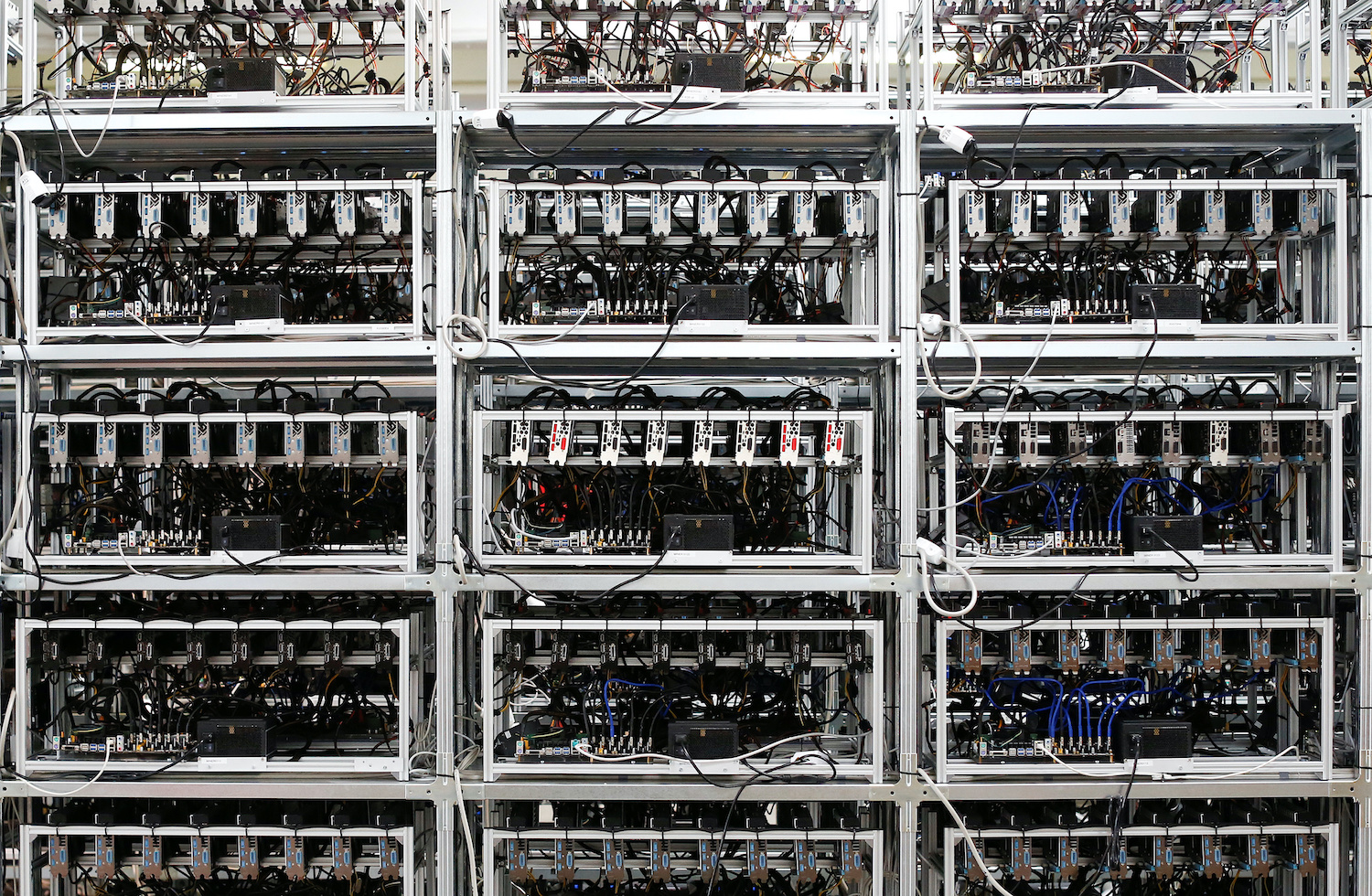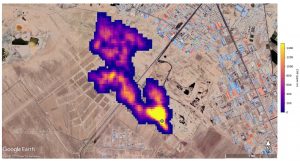(ATF) Virtual currency mining may completely move away from Inner Mongolia, as China clamps down on bitcoin miners taking advantage of cheap electricity prices, and other factors.
Senior officials announced that in order to achieve the 14th Five-Year Plan, energy consumption targets and tasks of the Inner Mongolia Autonomous Region, the region’s Development and Reform Commission issued new rules to clean up and shut down virtual currency mining projects – all must exit before the end of April 2021. It is also strictly forbidden to build new virtual currency mining projects.
Li Lianxuan, chief researcher of Ouke Cloud Chain Research Institute, told the paper.cn that Inner Mongolia mainly has thermal power and energy-intensive industries that pollute the environment, which is not conducive to achieving the goals of ecological civilization and green development. It is also contrary to the central energy consumption dual control decision and deployment.
“Because of the policy, I am going to move in these two days,” an owner who has a mine in Inner Mongolia told The Paper.
So, where will the mines and mining machines be moved to?
Sichuan and Yunnan are likely, as it is possible Xinjiang will also introduce a clearing-out policy.
A miner said once all the miners in Inner Mongolia are withdrawn, those with “channels” will move directly to other areas, while those without will entrust miners to transfer the machines. “There are already a large number of machines on the market, and mining opportunities will go to Sichuan and Yunnan. The migration to Xinjiang and other places may temporarily reduce the computing power of the entire network.”
Li Lianxuan said the decrease in the computing power of the entire network will raise the coin generation time, and then in the next adjustment coin generation difficulties will decrease, causing the coin generation time to drop and maintain a block generation time of 10 minutes.
A miner who takes care of machines in Inner Mongolia also revealed that most of the mining machines he knows in the region have begun to move to areas with sufficient hydropower, such as Sichuan and Yunnan.
The Yunnan-Guizhou-Sichuan region is rich in hydropower, and divided into high-water and low-water periods. In high-water periods, there is more rain and electricity is sufficient, and electricity prices are low, and there may even be “abandonment” problems. Previously, some miners had to move back and forth during the wet and dry periods, mining in Yunguichuan during the wet periods, and mining in Xinjiang, Inner Mongolia and other places during the dry periods.
Miner Kabi (pseudonym) said: “It was a coincidence at the end of April. The rainy season in Sichuan began in April and May, so the relocation was too late.”
Li Lianxuan also mentioned that Inner Mongolia’s policy document is currently only in the stage of soliciting comments, and an official document has not been issued yet. Many miners are still waiting to see if a new policy will be introduced before the end of the rainy season at the end of October.
So, once the dry season comes, where will the miners move?
“It’s definitely impossible to mine in the southwest during the dry season. That’s why they are mining in this place in Inner Mongolia. Now Inner Mongolia is not allowed to dig. Then in the dry season, these miners need to find another place that can provide electricity; local mining,” said Gu Yanxi, founder of Liyan Consulting and a researcher in the blockchain and encrypted digital asset industry.
In addition to Inner Mongolia, Xinjiang is also an area with sufficient thermal power. It is understood that thermal power in Xinjiang is cheaper than Inner Mongolia, but the distance is farther.
Yu Jianing, the rotating chairman of the Blockchain Committee of the China Communications Industry Association and president of Huobi University, said: “It is more likely [they’ll] move to Xinjiang and other places.” However, he also admitted that because Xinjiang also has energy consumption and pollution problems, it “may also introduce a (policy banning virtual currency mining)” and “the uncertainty is high”.
Li Lianxuan said the current perspective was that China is still the first choice for the construction of mining farms. In addition to Inner Mongolia, which has been the main gathering place for mining farms, there are still a large number of mining farms in Xinjiang, Gansu and other places in the northwest.
Kazakhstan: 14 crypto mines since June 2020
He suggested: “In foreign regions either electricity prices or labor costs (Europe and America) are too high, or the local political environment is unstable (in the Middle East or Africa).”
However, he also admitted that in the past few years the bitcoin mining industry was almost classified as having an “outdated production capacity” in mainland China. When faced with a complete retreat, many mines moved overseas.
A big consensus in the bitcoin mining industry is that “at least 60% of the computing power of the entire network is in China.” At present, the computing power in other countries is increasing.
According to the statistics of Guosheng Blockchain Research Institute, as of February 19, 2021, mining stocks represented by Marathon Patent Group, Riot Blockchain and BTBT have “swept up” 330,000 mining machines, with an announcement that the computing power is nearly 21EH/s, exceeding 16% of Bitcoin’s entire network computing power (136.18 EH/s).
“As for where they (miners) will move, it is still unclear. Central Asian countries may be an option. This is because Chinese miners were mining there before,” Gu Yanxi said.
According to news released by the mining machine manufacturer Canaan Technology, in mid-June 2020, a Senate hearing in Kazakhstan disclosed a plan for the first time to attract US$715 million in investment in the field of cryptocurrency mining. Kazakhstan already has 14 cryptocurrency mines.
Canaan Technology also said that this year it has established cooperative relations with a number of head mines in Kazakhstan. Take AQ Group as an example. As a large modern mine, it has signed orders for more than 25,000 mining machines from Canaan Technology since April 2019, covering multiple models of A1066Pro, A11 series and A1246.
In addition, Canaan Technology has also opened up a dedicated trunk line logistics channel from China to Kazakhstan, and provides customers with one-stop customs clearance services, assisting customers with customs clearance, and improving delivery efficiency. And the border between China and Kazakhstan is open, and containers are imported free of charge. In addition to paying value-added tax, there is no need to pay additional customs fees.
Yu Jianing said: “I think the possibility exists (of moving to Kazakhstan). Kazakhstan’s policy is indeed good, but I think there are still some relatively big problems and difficulties in the large-scale entry and exit of mining machines, so I think the uncertainty is relatively high – high.”
Could the US be an alternative?
Gu Yanxi also pointed out that the United States is also a very good choice now, “For example, Kentucky has recently issued a special policy to encourage miners to mine in Kentucky.”
As early as February 11, 2020, Reuters reported that Barry Silbert, the founder of Grayscale Investments, the world’s largest cryptocurrency asset management company, told investors that in the last three to six months, he has seen bitcoin mining activities being transferred from China to the United States and Canada.























